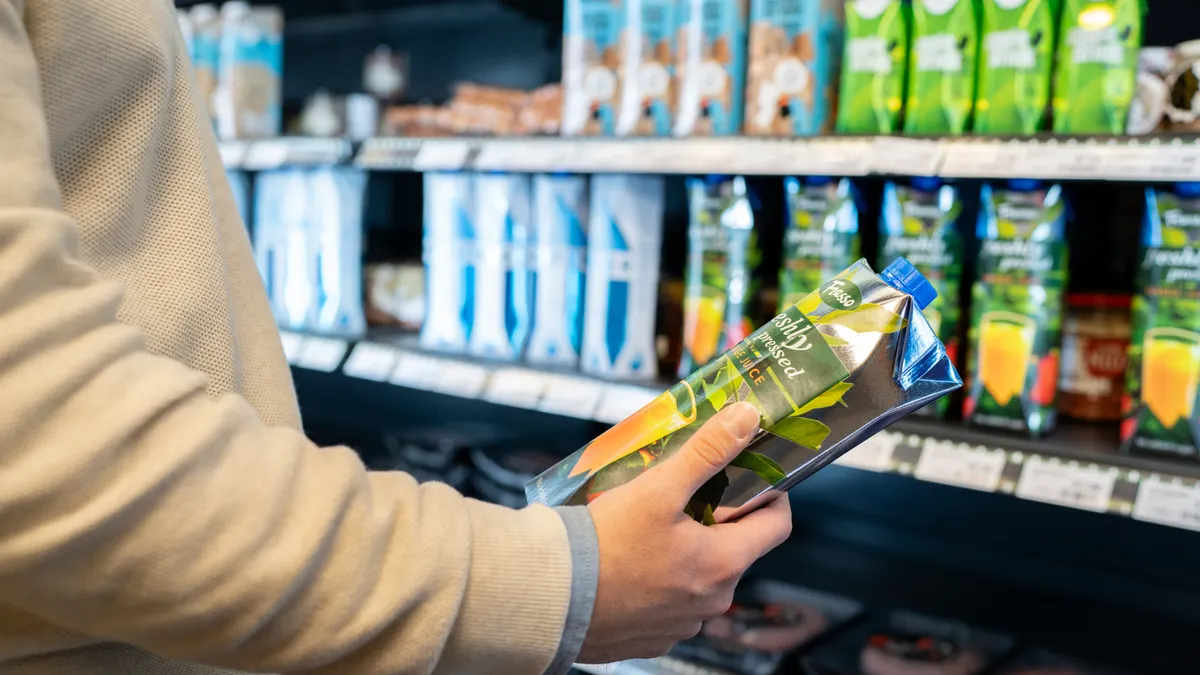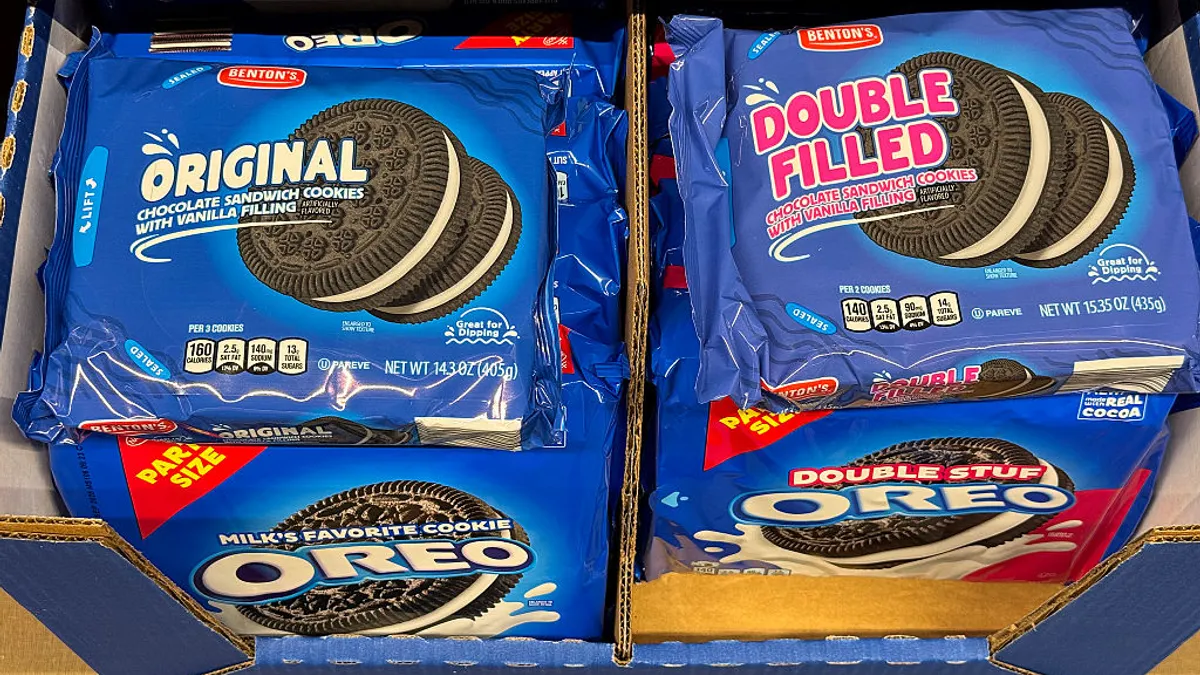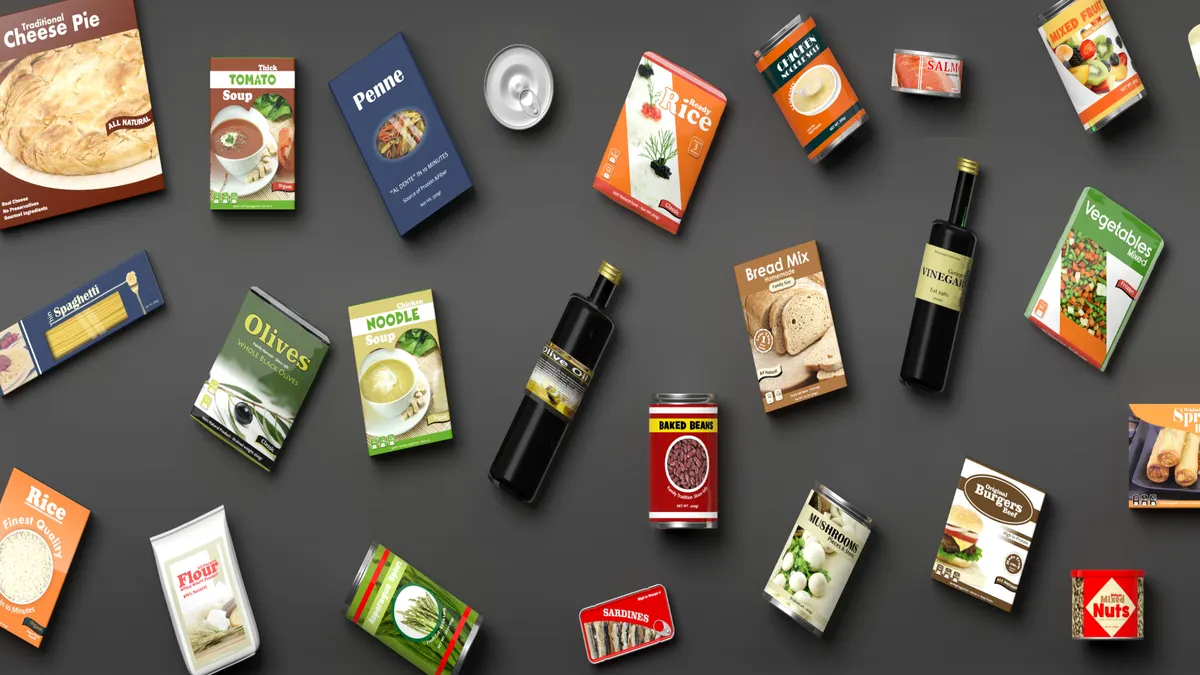Packaging can make or break the success of a food or beverage product in today’s market. That’s because packaging is more than just a container. It protects product quality, extends shelf life and keeps food safe, all while clearly displaying a brand’s values and driving differentiation on crowded shelves.
The right packaging solution balances innovation, quality and safety to influence buying decisions and set a brand apart in the market.
Choosing the right package for a product can also support a brand’s environmental goals. For example, did you know that food loss and food waste are responsible for 8–10% of global greenhouse gas emissions?
“We’re at a point where consumers are counting on brands to make the right choices,” says Babitha George, packaging portfolio manager for Tetra Pak U.S. and Canada. “Choosing recyclable packaging that has been purposefully designed to extend shelf life shows you recognize the impact your choices make on consumers — and the planet.”
Taking the guesswork out of sustainable packaging
Ignoring package recyclability can undermine consumer trust and loyalty. The stakes are real: Buyers are paying attention. Brands that fail to meet expectations risk losing credibility and brand preference.
“Brands set the tone for many of the sustainable choices consumers make when shopping,” George says. “If you want consumers to care about the environment, you have to make it easy for them and show that you’re taking responsibility first.”
Consumers want brands to make more sustainable packaging choices for a few key reasons:
- Environmental accountability: Nearly 9 in 10 U.S. adults expect food and beverage companies to actively increase recycling of their packages.
- Influence on purchase decisions: Sustainable packaging can tip the scales when consumers compare products, and it is closely tied to perceptions of brand trust.
- Leadership perception: Consumers want brands they support to treat sustainability as a standard practice, not a premium feature.
- Demand for clarity: Shoppers want transparency and guidance so they can make responsible choices easily.
Smart brands are offering sustainable packaging that’s easy to understand and use, and they’re upfront about the packaging’s benefits and limitations, George says.
“Validate your claims and make them practical,” she advises. “A supplier like Tetra Pak takes the guesswork out of sustainability messaging and provides the expertise and tools to deliver packaging that works for your business and your customers.”
On-pack messaging that drives action
The package itself is the best place to show your consumer how your brand is making responsible decisions about the full package lifecycle — not just one aspect of it.
For example, are the materials used to construct your packaging responsibly sourced? And, if so, does the package qualify for any third-party certifications? For example, Tetra Pak® cartons are made mainly of renewable, plant-based materials from Forest Stewardship Council (FSC) certified forests and other controlled sources. So, all cartons from the supplier can carry the FSC logo.
One of the most important on-pack messages to consider is on the topic of recycling. By placing clearly visible recycling instructions on packaging — including both a well-recognized logo and a URL with additional information — consumers are empowered to take action once they’ve enjoyed the product inside. (As one example of such a resource, Tetra Pak is a member of the Carton Council. The organization offers tools like www.recyclecartons.com, which helps consumers learn about carton recycling at their home address.)
“It’s not just a logo,” George says. “It’s a message that your product belongs in the recycling stream and that your company is taking responsibility.”
That responsibility extends to regulations, where clear instructions on packages also help brands stay ahead of the law. Extended producer responsibility (EPR) rules and regulations on packaging, chemicals and labeling in certain states could impact what information is able to be included on pack in the future.
“Packaging is no longer just about protecting the product,” George says. “It’s about protecting the planet, addressing compliance rules, meeting market demands and building trust with every stakeholder.”
If you are unsure what on-pack messages or logos your packaging can include, check with your packaging supplier.
The right package for every shelf and consumer
Companies that want to balance food safety, shelf life, consumer perception and sustainability need packaging solutions that check all of those boxes. Here are some practical steps Tetra Pak’s George recommends food and beverage companies take to improve packaging, stay compliant and build consumer trust:
- Evaluate your portfolio: Identify packaging that is misaligned with brand commitments and consumer expectations and replace it with sustainable alternatives, where they exist.
- Stay ahead of regulations: Work with your legal, compliance and corporate affairs teams to ensure packaging meets current and upcoming requirements.
- Educate consumers: Use clear labeling and verified claims to show the impact of responsible choices.
- Share progress: Highlight your packaging goals and achievements on-pack, online and in-store to strengthen brand leadership.
Done correctly, packaging helps food and beverage companies deliver products that resonate in a market that increasingly values safety, transparency and environmental impact.
To read more about Tetra Pak and its innovative approach to food and beverage packaging and processing through the lens of sustainability, visit tetrapakusa.com.






